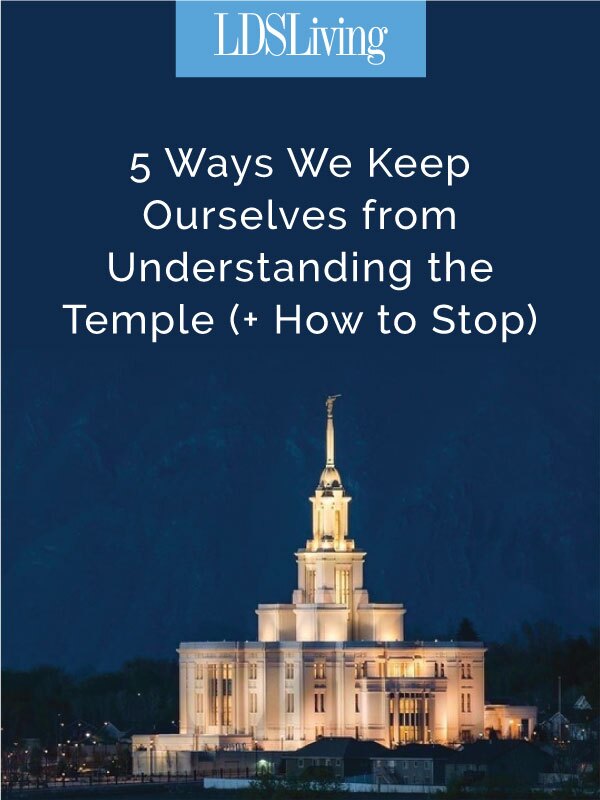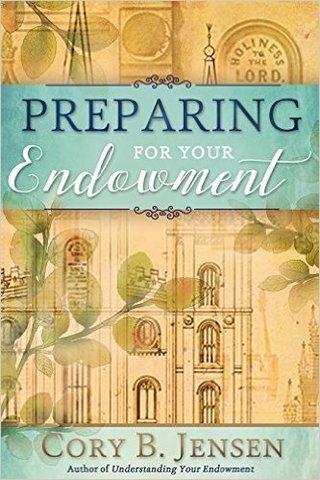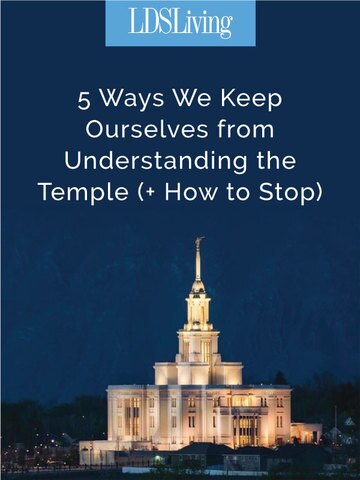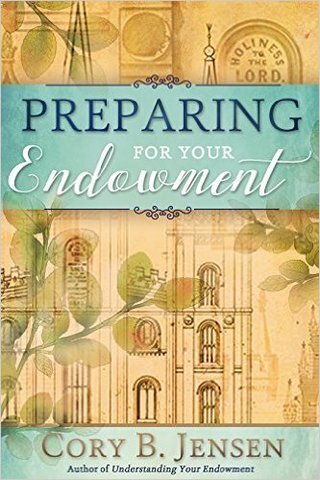
The temple has often been called the Lord’s university. Clearly, the Lord intends the temple to be a house of learning—one we should attend often (see D&C 109:8). In the temple and throughout our lives, we are commanded to seek learning by study and also by faith (see D&C 109:7). Learning by faith involves receiving revelation and having the Lord teach us. Our faith, prayers, fasting, pondering, and asking are all important tools to helping us understand the temple.
But we also need to seek learning by study, and the best books about the temple are the scriptures. Nearly all scripture is related to the temple, and the temple to the scriptures. In addition, Christ testified that the scriptures are close to His heart (see D&C 35:20). The scriptures should be close to ours as well.
Coming to understand our endowment is a personal journey between us and the Lord that requires learning by study and by faith. Along our way, it may be helpful to recognize a few potential barriers that may hinder our learning in the temple.
1. Lack of Interest
It is so easy to become too busy with other things in life to give the temple much of our time and attention. But this tendency can deprive us of growth and knowledge the Lord is willing to give. That said, there are seasons in our lives when focusing on temple attendance is easier than others.
When my wife and I had four young children ages 6 and younger at home, we were lucky to make it to the temple monthly. In fact there were years where we were only able to attend once or twice during the entire year. But for us at the time, even those few times were treasured because our priority was our small children.
Years later, however, when we were able to begin attending the temple weekly, it blessed and strengthened our marriage and our family in ways we didn’t expect. Please consider your individual circumstances and what would be appropriate in your own life and value whatever time you are able to spend in the Lord’s house. President Gordon B. Hinckley taught, “I would hope that we might go to the house of the Lord a little more frequently . . . I encourage you to take greater advantage of this blessed privilege. It will refine your natures. It will peel off the selfish shell in which most of us live. It will literally bring a sanctifying element into our lives and make us better men and women” (“Closing Remarks,” general conference, Oct. 2004).
2. Thinking We Already Know Enough
With regular temple attendance, we may reach a point where we stop inquiring and seeking for more. We may feel comfortable in what we have received. But when it comes to the temple, we are better off to remain as little children and be open to continually being taught. No matter how much we have already gained, the Lord is willing to offer us more, especially through the temple.
Some people say that they learn something new every time they attend the temple. It has not been that way for me, but insights have come with persistent effort and attendance. Elder John A. Widstoe taught, “Revelation … is not imposed upon a person; it must be drawn to us by faith, seeking and working. … To the man or woman who goes through the temple, with open eyes, heeding the symbols and the covenants, and making a steady, continuous effort to understand the full meaning, God speaks his word, and revelations come. … The endowment which was given by revelation can best be understood by revelation; and to those who seek most vigorously, with pure hearts, will the revelation be greatest” (“Temple Worship,” Utah Genealogical and Historical Magazine, Apr. 1921, p. 62).
3. Not Relating the Temple to Our Lives
Just as Nephi likened the scriptures to his family, we must liken the temple endowment to ourselves to really benefit from its teachings (see 1 Nephi 19:23). The temple endowment drama is not simply history but is fundamentally our story. In part, it is God’s explanation of our life’s condition, purpose, and journey using the symbols of two trees.
The figures of Adam and Eve are representative of each of us. Near the beginning of the endowment ceremony, we encounter the tree of knowledge. As the ceremony concludes, we are presented symbolically at the tree of life where we are taught more about its fruit. The endowment outlines the journey from one tree back to the other. It is, as President David O. McKay taught, the truest philosophy of life given to man.
4. Getting Sidetracked in Temple Symbolism
Because the temple is highly symbolic it can sometimes seem strange or confusing in our day. While a basic knowledge of common gospel symbols is essential to temple worship, we shouldn’t allow those things to frustrate or distract us.
Temple apologetics show traces of temple rites scattered throughout antiquity, which can be very interesting and can expand our appreciation for what Joseph Smith restored. The knowledge scholars have contributed about ancient temples and gospel symbols can add richness and depth and beauty to our temple experience. However, we should recognize that these things might fail to grasp the heart of the endowment, which is our personal journey back to God’s presence. The critical part of the endowment is our own personal experience with God.
If we find our study turning the temple experience into a giant game of symbolic Trivial Pursuit, we are probably off track. It would be better to focus on how the Lord would have us better implement our covenants in our daily lives. When we go to the temple to learn what the Lord would have us do, try to put it into practice in our lives, and then return to learn more, the temple will begin to transform and change our character.
5. Thinking We Won’t Understand the Endowment in This Life
The insights we can receive from the temple are often dramatically hindered by the idea that we aren’t meant to understand the endowment in this life, but it will finally make sense in the next life. I think the notion that we’ll “get it” in the next life is a mistake, though it may be a commonly held belief and one that I shared for many years. I believe that the Lord wants us to come to fully understand the endowment here in this life. We receive it here and it is meant to be understood here, even though that requires some effort and work on our part.
There are at least three primary purposes for our temple endowment: 1) to testify of Christ, 2) to complete our spiritual rebirth and help us grow into spiritual maturity, and 3) to bring us unto Christ to be redeemed by Him. In addition, the temple can also serve as a refuge during the storms of life.
Our Savior testified, “I will manifest myself to my people in mercy in this house” (D&C 110:7). Come to the temple to seek His Spirit, His love, His mercy and His solace in your life. Come to His house to find Him.
Lead photo from ldschurchtemples.com

Cory B. Jensen, author of Preparing For Your Endowment (Cedar Fort 2017) and Understanding Your Endowment (Cedar Fort 2015)



